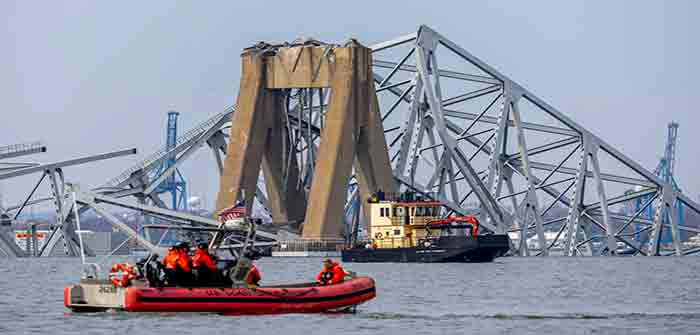
by Jamie McIntyre at Washington Examiner
RACE TO REOPEN, JOB ONE: CLEAR THE CHANNEL: The Port of Baltimore is one of the busiest on the East Coast, with between $100 million and $200 million in cargo moving through the port every day. There are 10 cargo ships trapped by the collapse of the Francis Scott Key Bridge on Wednesday and 8,000 dock and other workers idled representing about $2 million in wages. So the race is on to reopen the port to minimize disruption to global supply lines.
“No matter how quickly the channels can be reopened, we know that it can’t happen overnight. And so, we’re going to have to manage the impacts in the meantime,” Transportation Secretary Pete Buttigieg said at a White House briefing. “It’s America’s largest vehicle-handling port, which is important not only for car imports and exports but also for farm equipment.”
The Coast Guard is the lead agency, but the literal heavy lifting falls to the Army Corps of Engineers. “We’re going to go about this in three steps. The first is to get the steel truss out of a 700-foot wide by 50-foot deep channel,” Lt. Gen. Scott Spellmon, commander and chief of engineers for the corps, told CNN. “Then we’re going to look at the bottom and see what concrete members are down below. When these ships come into Baltimore harbor, there’s anywhere between a foot and a foot and a half of clearance from the bottom. So any piece of concrete, any piece of steel on the bottom is just as much a hazard.
“So that’s Step 1. That’s going to allow us to get one-way traffic going in and out of the Port of Baltimore again,” he said.
STEP 2, MOVE THE SHIP:…
Continue Reading